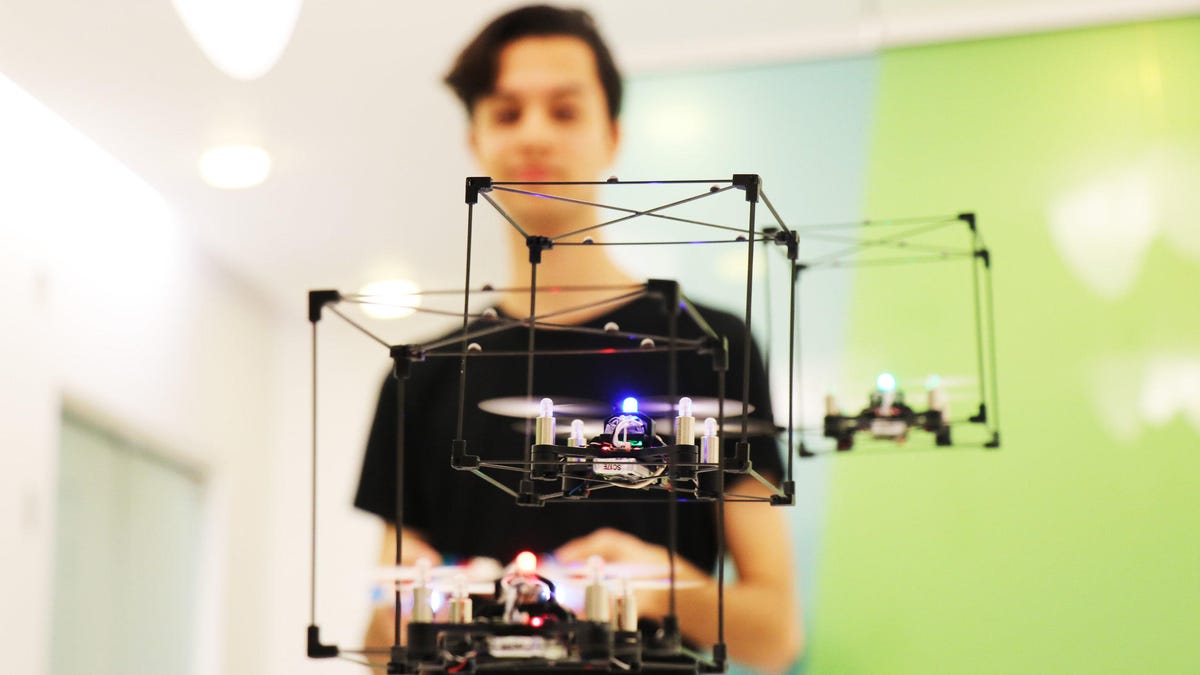Flying Lego? Drones mimic brick formations in middair
A new system on display at the Lego World expo uses quadcopters to replicate Lego patterns as in-air formations. Fly little Lego bricks! Be free!

A flock of mini-drones mimic the shape and color of the Lego pattern.
You just assembled a Lego Star Wars Millennium Falcon. How cool would it be if your blocky creation could take flight?
Sure, it's cool on the ground but...
A new system from Lego and Canada's Queens University lets Lego lovers control and animate brick formations in middair. Once they've arranged their pattern on a special Lego controller that can be twisted and bent, a swarm of quadcopters uses computer vision to replicate the pattern as an in-air formation.
Using tiny sensors and gyroscopes, the system also tracks when the (human) controller moves the (Lego) controller, making the swarm of mini drones move in kind. The video demo below shows the quadcopter flock mimicking the shape and colors of a bendable Lego butterfly decorated with red, blue and green bricks.
The new technology is on display at the Lego World expo in Copenhagen, where visitors can go hands-on with airborne brick creations through through Feb. 18.
And while the system isn't flying to stores yet, the Lego Creative Play Lab, which focuses on future trends, sees it as a potential tool for teaching young students about physics.
"Imagine us interactively reconstructing the movement of planets around our sun or distant stars in the Milky Way galaxy," says Roel Vertegaal, a professor of human-computer interaction at Queens University and head of the school's Human Media Lab, which made the system.
"With this technology, we are able to simulate the physics of the natural world like gravity, planetary orbits, and more, giving children a chance to see what they have long learned from textbooks and two-dimensional depictions, in a real physical environment."
Another advantage of computer-controlled flying Legos? Helping humans avoid the pain of stepping on the innocent-looking but painful little toys.

